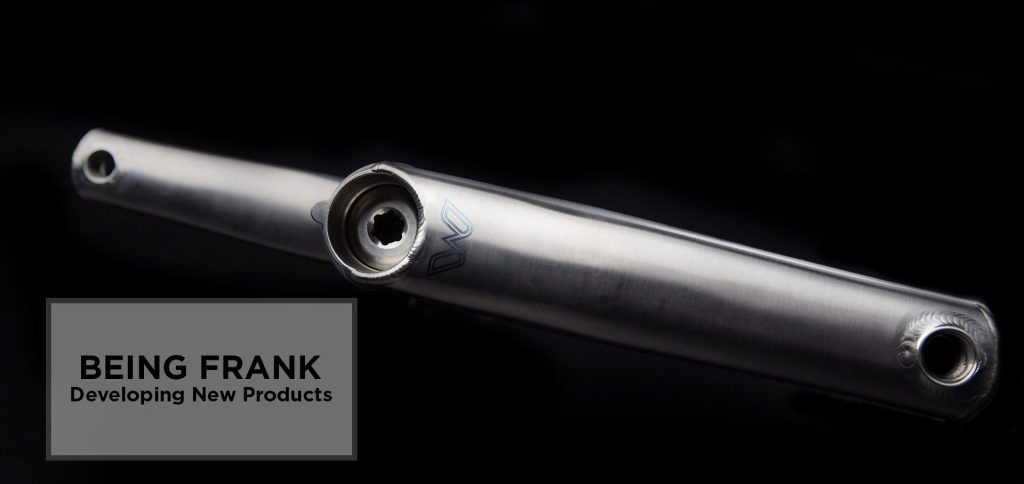

I am not aware of set product development process for the bicycle industry, though the companies I’ve worked for and with do follow the same basic concept. Some companies have a more regimented and formalized process, while others seem to operate on tribal knowledge and routine. Over the last twenty years there has been a clear trend towards more methodical decision making with greater emphasis on schedules and commercial realities. The maverick and visionary product managers of the 80s and 90s are gone as a result of a challenging market that no longer absorbs gambles and statement-making. Here I will outline the basic product development process we follow at Cane Creek and likely by the brand of your bike.
From conceptualizing a new product to putting it into customers’ hands can take one to three years or more. Rare, groundbreaking products can be in “advanced R&D” for years before (if ever) getting on the runway for takeoff. Conversely, product enhancements and product line extensions can fast-track in six months. Lastly, while some things must occur before others, the phases are neither fully sequential nor linear.
Product Management has five basic phases: Research, Analysis, Development, Production, and Go-To-Market. While it seems obvious that the “development” work is done in the Development phase, the gestalt perspective does not have the product completed until it is delivered. The baton changes hands numerous times as the product makes its way through the phases. The product manager is always on stage, but industrial designers, engineers, marketing hacks, quality techs, supply chain experts, operations managers, and others all play crucial parts in various phases.
The Research phase has been the least formalized, but that is changing as bikes have become better and better, competition fiercer, and forums and tweets deadlier. Research includes tracking developments and trends in related, crossover, or influencer industries. For example, typically motocross has been an influence on mountain bikes, and snowboard apparel has informed colors and graphics. But even watches, sunglasses, and running shoes are researched. Consumer and dealer focus groups and rider intercepts help hone in on nuances to exploit. Storyboards are created to visually map the landscape and point the direction forward.
The Analysis phase is aimed at making sense of all the collected data. Reviewing industry stats from groups like NPD (retail) and BPSA (wholesale), as well as customs import data, can help identify trends. Creating a Competitive Spec Matrix enables a product manager to get a view of how her products compare to the competition on key specs and features. At times an objective view on one’s own brand leads to a S.W.O.T. analysis. The goal is to make informed decisions instead of just “wouldn’t it be cool to sell one of these.”
The start of the Development phase is the product brief which includes all critical targets, features, specs, performance requirements, cost/margin targets, etc. Ideally it is a one-page compass that keeps the team on track. Timelines and milestones are then established to enable management of the project. Brainstorming sessions can be used when dead ends are encountered, and there is the eternal tension between engineering and design. Concepts turn into designs that result in prototypes to (hopefully) prove out the concept. Prototyping is the longest piece of the Development phase, though computer modeling gets one closer before physical iterations. Once the fundamental design is established, the focus moves to passing ISO standards, selecting vendors, creating tooling, and detailed cost negotiation. There can be multiple simultaneous phases like frame engineering and colors/graphics.
The development process does not end with placing a production purchase order. The Production phase includes planning how many to produce and when. And when one relies on various other suppliers that have their own new products, getting your product produced when you want it and in the quantity you want it can be a major headache. Don’t think for a minute that in-house manufacturing is easier – in my experience it’s harder. While there are defined quality standards, there are also standards that must be determined for paint color, acceptable non-critical dimensions, assembly, and packing.
Go-to-market can easily be tossed aside as marketing instead of development. But a pro product manager knows that her product will not likely succeed if it is not presented literally and figuratively in the right manner. From photography to videos, copy, press camps, internal sales training, customer service support, and shows, you want to make sure everyone and everything is aligned on the story and what it means to the rider. Some brands do this much better than others, and while one might infer that those brands that don’t tell their story well are more “real”, sometimes it just means that they’re off-the-back marketing-wise.
There is a tremendous amount of time, energy, and emotion that can go into bringing a product to life. While this only scratches the surface, it should provide a better understanding of how your bike came to be.
Monday: 10:00 am – 5:00 pm
Tuesday – Thursday: 10:00 am – 5:00 pm
Friday: 10:00 am – 5:00 pm
Saturday – Sunday: Closed